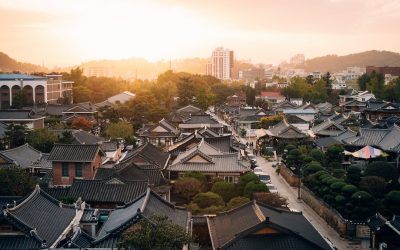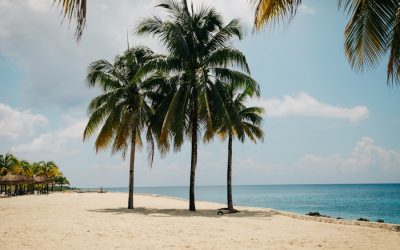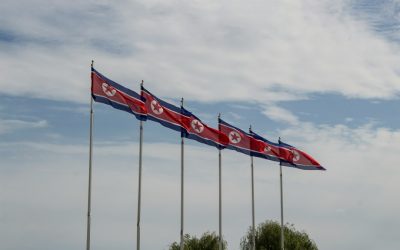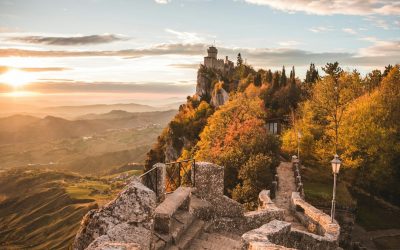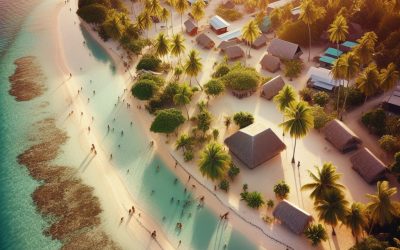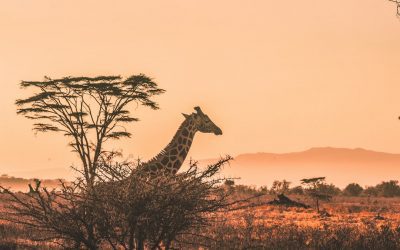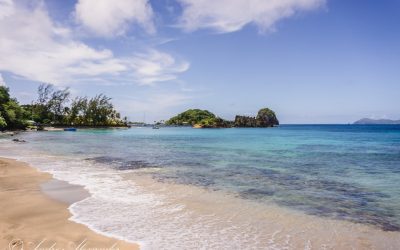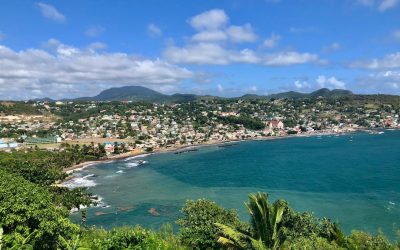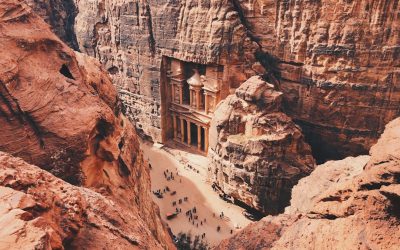World Geography
Geography is the study of the Earth’s landscapes, environments, and the relationships between people and their surroundings. It encompasses both the physical aspects of the Earth, such as its landforms, bodies of water, and climate, as well as the human aspects, including population distribution, cultures, and economies. World geography is a broad field that seeks to understand the complexities of our planet and how humans interact with it. By studying world geography, we can gain a deeper appreciation for the diversity of our planet and the interconnectedness of its various regions.
Geography is a multidisciplinary field that draws on elements of physical science, social science, and humanities. It involves the use of maps, spatial analysis, and geographic information systems (GIS) to understand the Earth’s surface and the processes that shape it. World geography also encompasses the study of human geography, which examines the ways in which people and their activities are distributed across the Earth. By understanding world geography, we can better appreciate the environmental, cultural, and economic challenges facing different regions of the world. This knowledge is crucial for addressing global issues such as climate change, resource management, and international development.
The Five Oceans and Seven Continents
The Earth’s surface is divided into five major oceans: the Pacific, Atlantic, Indian, Southern (or Antarctic), and Arctic Oceans. These vast bodies of water play a crucial role in regulating the Earth’s climate and supporting diverse marine ecosystems. The oceans also serve as important transportation routes and a source of food and other natural resources for human societies around the world.
In addition to the oceans, the Earth’s landmasses are divided into seven continents: Africa, Antarctica, Asia, Europe, North America, Australia (or Oceania), and South America. Each continent has its own unique physical and cultural characteristics, shaped by millions of years of geological processes and human history. From the deserts of Africa to the rainforests of South America, the continents offer a rich tapestry of landscapes and environments for exploration and study.
Major Mountain Ranges and Deserts
The Earth’s surface is also marked by major mountain ranges and deserts that have shaped the planet’s physical and cultural landscapes. The Himalayas, for example, are the highest mountain range in the world and are home to diverse ecosystems and cultures in countries such as India, Nepal, and Bhutan. The Andes in South America, the Rockies in North America, and the Alps in Europe are other prominent mountain ranges that have influenced human settlement patterns and economic activities.
Deserts cover about one-third of the Earth’s land surface and are characterized by low precipitation and extreme temperatures. The Sahara Desert in Africa is the largest hot desert in the world, while the Gobi Desert in Asia is one of the largest cold deserts. Deserts are not only home to unique flora and fauna but have also been important trade routes and cultural crossroads throughout history.
Climate Zones and Biomes
The Earth’s climate is influenced by a variety of factors, including latitude, altitude, ocean currents, and prevailing winds. As a result, the planet is divided into different climate zones, each with its own characteristic weather patterns and ecosystems. The equator, for example, experiences a tropical climate with high temperatures and heavy rainfall, while the polar regions have a cold and dry climate.
These climate zones give rise to different biomes, or large ecological areas characterized by distinct plant and animal communities. The tropical rainforest biome, found near the equator, is home to a diverse array of species and is vital for regulating the Earth’s climate. The grasslands biome, found in regions such as the African savannah and North American prairies, supports grazing animals and has been important for human agriculture throughout history.
Human Geography and Population Distribution
Human geography examines the ways in which people and their activities are distributed across the Earth’s surface. It encompasses topics such as population growth, migration patterns, urbanization, and cultural diversity. Understanding human geography is crucial for addressing global challenges such as poverty, inequality, and environmental degradation.
Population distribution is uneven across the world, with some regions experiencing rapid population growth while others are declining. The majority of the world’s population lives in Asia, particularly in countries such as China and India. Urban areas are also growing rapidly, with more than half of the world’s population now living in cities. This trend has significant implications for infrastructure development, resource management, and social inequality.
Historical and Cultural Geography
Historical geography examines how human activities have shaped the Earth’s landscapes over time. It explores topics such as colonialism, trade routes, and the rise and fall of empires. Cultural geography focuses on how human cultures have developed in different regions of the world and how they interact with their environments.
The Silk Road, for example, was an ancient trade route that connected China with Europe and facilitated the exchange of goods, ideas, and technologies across Eurasia. This historical trade route had a profound impact on the development of cultures and economies along its path. Similarly, cultural geographers study how different societies have adapted to their environments through practices such as agriculture, architecture, and religious beliefs.
The Importance of Geographic Knowledge
Geographic knowledge is crucial for addressing global challenges such as climate change, resource management, and international development. By understanding world geography, we can better appreciate the environmental, cultural, and economic challenges facing different regions of the world. This knowledge is crucial for addressing global issues such as climate change, resource management, and international development.
Geographic knowledge also helps us to understand our interconnectedness with other regions of the world. By studying world geography, we can gain a deeper appreciation for the diversity of our planet and the interconnectedness of its various regions. This understanding can foster a sense of global citizenship and empathy for people from different cultures and backgrounds.
In conclusion, world geography is a complex and multifaceted field that encompasses both physical and human aspects of the Earth’s landscapes. By studying world geography, we can gain a deeper appreciation for the diversity of our planet and the interconnectedness of its various regions. This knowledge is crucial for addressing global challenges such as climate change, resource management, and international development. It also helps us to understand our interconnectedness with other regions of the world and fosters a sense of global citizenship.
FAQs
What is world geography?
World geography is the study of the Earth’s landscapes, environments, and the relationships between people and their environments. It encompasses the physical features of the Earth, as well as the human activity that takes place on it.
Why is world geography important?
World geography is important because it helps us understand the world around us. It provides insights into the physical and human processes that shape our planet, and helps us make informed decisions about how to interact with our environment.
What are the main branches of world geography?
The main branches of world geography include physical geography, which focuses on the Earth’s natural features and processes, and human geography, which examines the relationships between people and their environments.
How does world geography impact our daily lives?
World geography impacts our daily lives in numerous ways, from influencing the weather and climate we experience, to shaping the availability of natural resources and influencing the distribution of populations and cultures around the world.
What are some key concepts in world geography?
Key concepts in world geography include location, place, human-environment interaction, movement, and region. These concepts help geographers understand and interpret the world around them.
Discovering the Beauty and Culture of South Korea: A British Traveller’s Journey
South Korea, a country known for its rich cultural heritage, vibrant cities, and stunning natural landscapes, has always been on my travel bucket list. Last year, I finally had the opportunity to embark on a journey to this fascinating country. In this blog post, I will share my personal experience of traveling to South Korea and explore the various aspects that make it such a captivating destination. Summary South Korea has a rich cultural heritage that is reflected in its art, architecture, and traditions. The bustling cities of Seoul and Busan offer a vibrant and exciting atmosphere for visitors to explore. South Korea’s natural landscapes are breathtakingly beautiful, with mountains, beaches, and forests to discover. The cuisine of South Korea is delicious and varied, with a focus on fresh ingredients and bold flavors. Traditional Korean tea culture is an important part of the country’s history and is still celebrated today. The Rich Cultural Heritage of South Korea South Korea has a long and storied history that dates back thousands of years. From the ancient kingdoms of Goguryeo, Baekje, and Silla to the more recent Joseon Dynasty, the country’s history is deeply intertwined with its cultural heritage. Traditional customs and practices are still very much alive in South Korea today. One of the most iconic aspects of Korean culture is the hanbok, the traditional Korean clothing. The hanbok is characterized by its vibrant colors and elegant design, and it is often worn during special occasions such as weddings and festivals. Another important aspect of Korean culture is the emphasis on respect for elders and ancestors. This can be seen in...
Discovering the Hidden Gems of Sao Tome and Principe: A Journey to the Enchanting Islands
Sao Tome and Principe is a small island nation located in the Gulf of Guinea, off the western coast of Central Africa. Comprising of two main islands, Sao Tome and Principe, as well as several smaller islets, this hidden gem is often overlooked by travellers in favour of more popular destinations. However, those who do venture to Sao Tome and Principe are rewarded with pristine beaches, lush rainforests, and a rich cultural heritage. The history of Sao Tome and Principe is deeply intertwined with its colonial past. The islands were discovered by Portuguese explorers in the late 15th century and soon became an important hub for the transatlantic slave trade. The legacy of this dark period can still be seen in the country’s culture and architecture. Today, Sao Tome and Principe is a melting pot of African and Portuguese influences, creating a unique blend of traditions, music, dance, and art. Summary Sao Tome and Principe is a lesser-known paradise with rich history and culture. The best time to visit is during the dry season from June to September, with festivals throughout the year. The beaches and coastal landscapes are stunning, with opportunities for diving and wildlife watching. The rainforests are home to unique flora and fauna, including the endemic bird species. Visiting the historic plantations and colonial architecture offers a glimpse into the country’s past. Getting to Know the Rich History and Culture of Sao Tome and Principe The colonial past of Sao Tome and Principe has had a profound impact on the culture of the islands. The Portuguese brought African slaves to work on the sugar...
Exploring the Enigmatic: A Journey Through North Korea
North Korea, officially known as the Democratic People’s Republic of Korea (DPRK), is a country located on the Korean Peninsula in East Asia. It is bordered by China to the north, Russia to the northeast, and South Korea to the south. With a population of approximately 25 million people, North Korea is one of the most secretive and isolated countries in the world. The political system in North Korea is a highly centralized and authoritarian regime. The country is ruled by the Kim dynasty, which has been in power since its establishment in 1948. The current leader is Kim Jong-un, who took over after the death of his father, Kim Jong-il, in 2011. The ruling party in North Korea is the Workers’ Party of Korea, which has a monopoly on political power. North Korea’s isolation and secrecy can be attributed to a combination of factors. Firstly, the country has a strict policy of self-reliance and has limited its interactions with the outside world. This isolationist approach has allowed the regime to maintain control over its population and limit the influence of external forces. Additionally, North Korea’s government tightly controls information flow within the country, making it difficult for citizens to access information from outside sources. Summary North Korea is a mysterious and isolated nation with a fascinating history. Kim Jong-un and his regime are enigmatic and control the narrative through propaganda. Daily life in North Korea is tightly controlled and citizens have limited freedoms. North Korea’s nuclear ambitions and military might pose a threat to international relations. The economic challenges and opportunities of a socialist state are a key...
The Last Emperor of China: Aisin-Gioro Puyi
In the tumultuous history of China, there was one individual whose life encapsulated the rise and fall of an empire. Aisin-Gioro Puyi, the last emperor of China, navigated a treacherous political landscape and experienced firsthand the dramatic changes that swept his nation. This article will delve into the life of Aisin-Gioro Puyi, exploring his role as the final emperor, his journey of transformation, and the legacy he left behind. The Last Emperor of China – Who was Aisin-Gioro Puyi? Aisin-Gioro Puyi was born in 1906, and at the tender age of two, he ascended the Dragon Throne as the Qing Dynasty’s final emperor. As a young child, he held a symbolic position of power, while real decisions were made by a regency council. However, the winds of change were brewing, and the imperial rule faced increasing challenges from revolutionary forces. The Rise of Revolution A century of imperial rule was met with growing discontent as societal and political changes swept across China. The desire for modernization and democracy ignited a series of uprisings against the monarchy. In 1911, the Xinhai Revolution led to the overthrow of the Qing Dynasty, marking the end of more than two thousand years of imperial rule. A Transformed Emperor Overnight, Aisin-Gioro Puyi’s life was upended. He was forced to abdicate the throne, and the Imperial Palace in Beijing became a museum, no longer serving as the seat of power. Puyi was thrust into a world he was ill-prepared for, as he was taken captive by warlord Zhang Xun and later placed under the control of Japanese forces during the turbulent Warlord Era. The Puppet...
Discovering the Hidden Gem of Europe: Exploring the Wonders of San Marino
Nestled in the heart of Italy, San Marino is a small but enchanting country that often goes unnoticed by travelers. With a population of just over 33,000, it is one of the smallest countries in the world. Despite its size, San Marino boasts a rich history, stunning landscapes, and a vibrant culture that make it a hidden gem in Europe. San Marino is known for its picturesque landscapes, charming medieval towns, and breathtaking views. It is a land of contrasts, where ancient traditions blend seamlessly with modern amenities. Whether you’re a history buff, an outdoor enthusiast, or a food lover, San Marino has something to offer everyone. Summary San Marino is Europe’s best-kept secret, offering a unique blend of history, culture, and natural beauty. The country’s rich heritage is evident in its captivating landscapes and stunning architectural marvels. Visitors can indulge in delicious cuisine and experience vibrant festivals and events. Shopping for unique treasures and embarking on outdoor adventures are also popular activities. Planning ahead and taking advantage of local recommendations can ensure a memorable trip to San Marino. History and Culture: Uncovering the Rich Heritage of San Marino San Marino’s history dates back to the 4th century AD when a Christian stonemason named Marinus fled from the persecution of Emperor Diocletian and sought refuge on Mount Titano. Marinus established a small community that eventually grew into the Republic of San Marino, making it one of the oldest surviving sovereign states in the world. Today, visitors can explore the historical landmarks and museums that showcase San Marino’s rich heritage. The Three Towers of San Marino, including Guaita, Cesta, and...
Discovering the Hidden Gem of Kiribati: A Journey Through the Pacific Islands
Nestled in the heart of the Pacific Ocean, Kiribati is a hidden gem waiting to be discovered. Comprising 33 coral atolls and islands, this remote nation is known for its pristine beaches, crystal-clear waters, and vibrant culture. Kiribati is located in the central Pacific, straddling the equator and the International Date Line. Its unique geography makes it one of the few places in the world where you can stand with one foot in today and the other in tomorrow. The culture and traditions of Kiribati are as captivating as its natural beauty. The people of Kiribati have a deep connection to their land and sea, and their way of life is deeply rooted in their ancestral heritage. From traditional dances and music to storytelling and oral traditions, Kiribati’s culture is rich and diverse. The people of Kiribati are warm and welcoming, always ready to share their traditions with visitors. Summary Kiribati is a stunningly beautiful destination in the Pacific Islands. The country is full of contrasts and diversity, from its history to its natural wonders. Visitors can explore the fascinating history and unique culture of Kiribati. The country is home to spectacular natural wonders and wildlife, perfect for adventure seekers. Visitors can enjoy warm hospitality and delicious cuisine while staying in Kiribati. Kiribati: A Land of Contrasts and Diversity Kiribati is made up of three main island groups: the Gilbert Islands, the Phoenix Islands, and the Line Islands. Each group has its own unique characteristics and attractions. The Gilbert Islands are the most populous and developed, with the capital city of Tarawa located here. The Phoenix Islands are a...
Discover the Untouched Beauty of Samoa: A Journey Through the Pacific’s Hidden Gem
Located in the heart of the South Pacific, Samoa is a hidden gem that often gets overlooked by travelers. This small island nation is made up of two main islands, Upolu and Savai’i, and is known for its stunning natural beauty, rich cultural heritage, and warm hospitality. With its pristine beaches, lush rainforests, traditional villages, and unique cuisine, Samoa offers a truly unforgettable travel experience. Samoa has a fascinating history that dates back thousands of years. The islands were first settled by Polynesians around 3,000 years ago and have since been influenced by various cultures, including European explorers and missionaries. Today, Samoa is an independent country with a proud cultural heritage that is deeply rooted in its traditional way of life. Summary Samoa is a hidden gem in the Pacific, offering natural wonders, cultural riches, unique cuisine, adventure activities, and off-the-beaten-path destinations. Pristine beaches and lush rainforests are among the natural wonders of Samoa, providing opportunities for relaxation and exploration. Traditional villages and ancient traditions showcase the cultural riches of Samoa, offering a glimpse into the country’s unique heritage. Samoa’s cuisine is a blend of local flavours and international influences, with fresh seafood and tropical fruits being among the highlights. Surfing, hiking, and other adventure activities are popular in Samoa, providing opportunities for adrenaline seekers and nature lovers alike. The Natural Wonders of Samoa: Pristine Beaches and Lush Rainforests One of the main attractions of Samoa is its breathtaking beaches. With crystal-clear turquoise waters and powdery white sand, these beaches are like something out of a postcard. Whether you’re looking to relax on the beach or go snorkeling in...
Exploring the Wonders of Kenya: A Journey Through the Heart of East Africa
Kenya is a country that offers a unique and unforgettable travel experience. Located in East Africa, it is known for its diverse landscapes, rich cultural heritage, and abundant wildlife. From the iconic Mount Kenya to the stunning beaches of the coast, Kenya has something to offer every type of traveler. In this article, we will explore the various attractions and experiences that make Kenya a must-visit destination. One of the main reasons to visit Kenya is to experience its rich cultural heritage and natural wonders. The country is home to over 40 different ethnic groups, each with their own unique traditions and customs. From the Maasai people with their vibrant red clothing and intricate beadwork to the Swahili people with their rich history and architecture, Kenya’s cultural diversity is truly fascinating. In addition, Kenya is blessed with breathtaking natural beauty, including national parks, mountains, and beaches. Whether you are interested in wildlife viewing or simply relaxing on the beach, Kenya has it all. Summary Kenya has a rich cultural heritage waiting to be discovered. The diverse landscapes of Kenya offer a unique and unforgettable experience. Witnessing the Great Migration at Masai Mara is a once-in-a-lifetime opportunity. Embarking on a safari adventure in Kenya’s national parks is a must-do activity. Relaxing on Kenya’s stunning beaches is the perfect way to unwind and soak up the sun. Discovering Kenya’s Rich Cultural Heritage Kenya is a melting pot of cultures, with over 40 different ethnic groups living within its borders. Each group has its own distinct traditions and customs, making Kenya a fascinating destination for cultural exploration. Visitors can immerse themselves in...
Discovering the Hidden Gems of Saint Vincent and the Grenadines: A Journey through the Caribbean’s Best-Kept Secret
Saint Vincent and the Grenadines is a stunning Caribbean country located in the southern part of the Caribbean Sea. It is made up of 32 islands and cays, with Saint Vincent being the largest and most populous island. The country has a rich history and culture, with influences from African, European, and indigenous Carib peoples. Saint Vincent and the Grenadines is known for its pristine beaches, crystal-clear waters, and lush tropical landscapes. It offers a wide range of activities for visitors to enjoy, from snorkeling and diving to hiking and exploring historical sites. With its warm climate, friendly locals, and breathtaking scenery, it is no wonder that Saint Vincent and the Grenadines is considered a must-visit destination. Summary Saint Vincent and the Grenadines is a beautiful Caribbean paradise with stunning beaches, rich culture and history, and plenty of outdoor activities. The best beaches in Saint Vincent and the Grenadines include Princess Margaret Beach, Canouan Island, and Tobago Cays. Exploring the culture and history of Saint Vincent and the Grenadines can be done through visiting places like Fort Charlotte, the Botanical Gardens, and the St. Vincent and the Grenadines National Museum. The top tourist attractions in Saint Vincent and the Grenadines include the La Soufriere volcano, the Falls of Baleine, and the Old Hegg Turtle Sanctuary. The best hiking and nature trails in Saint Vincent and the Grenadines can be found in places like Vermont Nature Trail, Montreal Gardens, and Dark View Falls. The best snorkeling and diving spots in Saint Vincent and the Grenadines include Tobago Cays, Mayreau Gardens, and the Wall at Petit Byahaut. The best places to...
Discovering the Hidden Gems of Kazakhstan: A Journey Through Central Asia’s Best-Kept Secret
Kazakhstan, the ninth largest country in the world, is a hidden gem waiting to be explored. Located in Central Asia, this vast and diverse country offers a wealth of natural wonders, cultural treasures, and thrilling outdoor activities. From the majestic Altai Mountains to the stunning Kolsai Lakes and the breathtaking Charyn Canyon, Kazakhstan is a paradise for nature lovers. But it’s not just the landscapes that make Kazakhstan worth exploring; its rich heritage, delicious cuisine, modern cities, and warm hospitality also make it a fascinating travel destination. Summary Kazakhstan boasts natural wonders from mountains to deserts Cultural treasures await those who explore Kazakhstan’s rich heritage A gastronomic journey through Central Asia reveals the flavours of Kazakhstan Thrilling outdoor activities can be found in Kazakhstan’s wild landscapes Comfort and luxury can be found in the best places to stay in Kazakhstan The Natural Wonders of Kazakhstan: From Mountains to Deserts Kazakhstan is blessed with diverse landscapes that will leave any nature enthusiast in awe. The Altai Mountains, located in the northeastern part of the country, are a paradise for hikers and mountaineers. With their snow-capped peaks, alpine meadows, and crystal-clear lakes, the Altai Mountains offer breathtaking views and endless opportunities for adventure. Another natural wonder in Kazakhstan is the Kolsai Lakes. Located in the Tien Shan Mountains, these three stunning lakes are known for their turquoise waters and picturesque surroundings. Visitors can hike through lush forests, camp by the lakeside, or simply relax and enjoy the tranquility of nature. One of Kazakhstan’s most famous natural attractions is the Charyn Canyon. Often referred to as the “Grand Canyon’s little brother,” this...
Discovering the Hidden Gems of Saint Lucia: A British Traveller’s Guide
Saint Lucia, located in the eastern Caribbean Sea, is often considered the Caribbean’s best-kept secret. This stunning island offers a unique blend of natural beauty, rich cultural heritage, and off-the-beaten-path adventures. With its lush rainforests, pristine beaches, and vibrant local culture, Saint Lucia is a destination that truly has something for everyone. One of the reasons why Saint Lucia is considered a hidden gem is because it is often overshadowed by its more popular Caribbean neighbors. While destinations like Jamaica and the Bahamas attract hordes of tourists, Saint Lucia remains relatively untouched and unspoiled. This means that visitors to the island can experience a more authentic and intimate Caribbean experience. Summary Saint Lucia is the Caribbean’s best-kept secret, offering hidden gems and natural wonders. Explore off the beaten path to discover the island’s rich cultural heritage and top hiking trails. Saint Lucia boasts some of the best beaches you’ve never heard of, perfect for a secluded getaway. Foodies will love the local cuisine, with plenty of options to try traditional dishes. Don’t miss out on the island’s scenic drives and road trips, and be sure to pick up some local crafts as souvenirs. Off the Beaten Path While Saint Lucia is known for its stunning beaches and luxurious resorts, there are also plenty of off-the-beaten-path attractions and activities to explore. One hidden gem is the Tet Paul Nature Trail, located in the southwestern part of the island. This trail offers breathtaking views of the famous Pitons, as well as a glimpse into local farming practices and traditional village life. Another lesser-known attraction is the Enbas Saut Waterfall, located in...
Exploring the Wonders of Jordan: A Journey Through the Land of Ancient Civilizations
Jordan, located in the heart of the Middle East, is a country that is rich in history and culture. It is bordered by Saudi Arabia to the south, Iraq to the east, Syria to the north, and Israel and Palestine to the west. With its strategic location, Jordan has been a crossroads of civilizations for thousands of years, resulting in a diverse and fascinating cultural heritage. The history of Jordan dates back to ancient times, with evidence of human habitation dating back to the Paleolithic period. Throughout its history, Jordan has been home to numerous civilizations, including the Nabataeans, Romans, Byzantines, and Ottomans. This rich history is evident in the country’s archaeological sites, such as Petra and Jerash, which attract visitors from around the world. In addition to its historical significance, Jordan is also known for its vibrant culture. The country is home to a diverse population, with Arab Bedouin tribes making up a significant portion of the population. The traditional Bedouin way of life can still be seen in many parts of Jordan, particularly in the desert regions. Jordan is also known for its warm hospitality and friendly people. Visitors to the country are often struck by the genuine kindness and generosity of the Jordanian people. This hospitality is deeply rooted in Jordanian culture and is a reflection of the country’s values and traditions. Summary Jordan is a country with a rich history and culture. Petra is a UNESCO World Heritage Site and a must-visit destination in Jordan. Wadi Rum is a natural wonder with stunning desert landscapes. The Dead Sea is a unique natural phenomenon and a...
